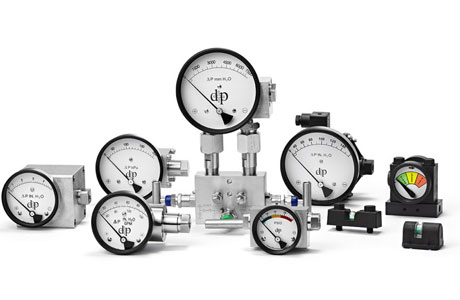What Are The Different Types Of Pressure Gauges?
Key Takeaway
The main types of pressure gauges are Bourdon tube gauges, diaphragm gauges, digital gauges, and differential pressure gauges. Bourdon tube gauges are versatile and measure medium to high pressures.
Diaphragm gauges are ideal for low pressures, while digital gauges offer precise electronic readings. Differential gauges measure pressure differences and are commonly used in filtration or flow systems.
Overview of Pressure Gauge Categories
Pressure gauges are essential instruments used to measure and monitor pressure in various systems, ensuring their optimal performance and safety. They are categorized based on their design, functionality, and application, each suited for specific environments and pressure ranges. Understanding the different pressure gauge categories helps in selecting the right instrument for the task, enhancing accuracy and reliability.
The primary categories include mechanical, digital, and differential pressure gauges. Mechanical gauges are widely used due to their simplicity and durability, while digital gauges offer advanced features and precision. Differential pressure gauges, on the other hand, are vital for applications requiring the measurement of pressure differences. Familiarity with these categories aids in effective system maintenance and operational efficiency.

Analog Pressure Gauges
Analog pressure gauges, one of the oldest types, function through mechanical movement. A common example is the Bourdon tube, which deforms in response to pressure. This deformation is transferred to a needle, which moves across a dial that displays the pressure value. These gauges are widely used for industrial applications due to their simplicity and cost-effectiveness.
Applications: Analog gauges are suitable for environments where pressure readings are needed in real-time and high precision is not crucial. They are commonly found in HVAC systems, automotive applications, and heavy machinery.
Despite being less precise than digital gauges, they are durable, easy to read, and often more affordable. Analog gauges are also preferred in environments where extreme conditions, such as high temperatures, may affect digital devices.
Digital Pressure Gauges
Digital pressure gauges use electronic sensors, typically piezoelectric or strain gauges, to convert pressure into an electrical signal. This signal is then processed and displayed numerically on an LCD or LED screen. Digital gauges offer the advantage of high accuracy and the ability to switch between different units of pressure, such as psi, bar, or pascal.
Applications: Digital pressure gauges are ideal for applications that require precise measurements or where readings need to be recorded and transmitted. Common uses include laboratory experiments, medical equipment, and modern industrial systems.
Additionally, many digital gauges come with advanced features such as data logging, remote monitoring, and integration with other systems, making them perfect for high-tech applications and environments that require constant monitoring.
Differential Pressure Gauges
Differential pressure gauges are specialized instruments used to measure the difference in pressure between two points in a system. They are essential in situations where it’s critical to monitor pressure fluctuations between distinct locations, such as across filters, pumps, or ventilation systems.
Applications: Differential pressure gauges are commonly used in industries like oil and gas, pharmaceuticals, and HVAC. For example, in HVAC systems, they help measure the pressure drop across filters, ensuring they are functioning properly and efficiently.
These gauges provide a more detailed understanding of system performance and are particularly useful when maintaining balance and efficiency is crucial.
High-Precision Pressure Gauges
High-precision pressure gauges are designed for environments where extremely accurate measurements are required. These gauges often have a higher level of calibration and are used in scientific research, aerospace, and certain medical applications. High-precision gauges are designed to reduce any measurement errors and offer exceptional repeatability, ensuring highly accurate pressure readings even in very sensitive conditions.
Applications: These gauges are used in applications like calibrating other instruments, laboratory tests, and monitoring critical systems such as fuel pressure in aerospace and automotive testing. They are also essential in industries that require exact specifications, like semiconductor manufacturing or pharmaceutical production.
Due to their high cost and specialized design, they are typically used in settings where precision is paramount.
Conclusion
Pressure gauges are indispensable tools in various industries, providing critical pressure readings that ensure the safety and efficiency of systems. The three primary types of pressure gauges include mechanical, digital, and differential gauges, each with its distinct applications and advantages. Mechanical gauges are valued for their simplicity and reliability, while digital gauges offer precision with easy readability.
Differential gauges, on the other hand, are essential in applications where pressure differences between two points need to be monitored. Understanding the different types of pressure gauges is crucial for selecting the right tool for specific applications, ensuring optimal performance and safety in operational environments.
